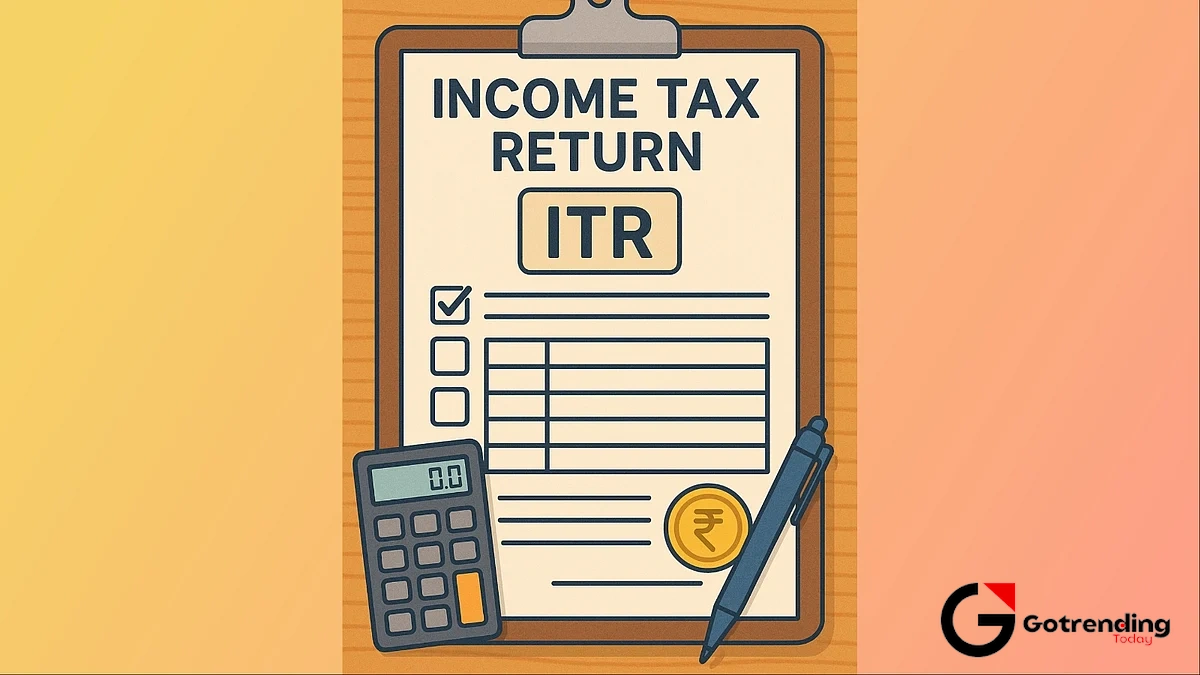The Annual Ritual | My Slightly Jaded, Actually Helpful Guide to the ITR
Let’s be honest. Nobody wakes up on a Tuesday morning, sips their chai, and thinks, “You know what would be a fantastic way to spend my day? Filling out government forms!” And yet, here we are, year after year, facing the beast that is the ITR . The Income Tax Return. It sounds so official, so… final. For years, the mere mention of it sent a little jolt of anxiety through my system. A jumble of forms, confusing jargon, and the looming spectre of a deadline. It felt like a test I hadn’t studied for.
But something shifted for me a few years back. It was probably after the third or fourth time I muddled through it, armed with a perpetually confused-looking CA and a mountain of receipts. I realized the ITR wasn’t just a chore. It was a story. The financial story of my year, all laid out in neat (or not-so-neat) columns and rows. And once you understand the story you’re trying to tell, the whole process becomes… well, not fun, let’s not get carried away. But manageable. Even empowering.
So, grab a coffee. Let’s talk about this thing. Not like an accountant, but like a friend who’s been in the trenches and has a few scars to prove it.
So, What Exactly Is This ITR Thing, Anyway?

At its core, an Income Tax Return is a declaration. You’re having a formal chat with the Income Tax Department, telling them, “Hey, this is how much I earned this past financial year, this is where it came from, and based on my calculations, this is the tax I believe I owe.” Or, and this is the beautiful part, “This is the refund you owe me.” Yes, that happens. A lot.
But it’s more than just a declaration of income. Think of it as your financial passport. It’s a document that validates your income to the rest of the world. Filing your ITR isn’t just about paying tax; it’s about creating an official record of your financial standing. This piece of paper (or, more accurately, this digital file) is surprisingly powerful. I initially thought it was just about compliance, but after looking deeper, its utility is far more widespread.
The whole process happens on the government’s e-filing portal . It used to be a clunky, frustrating beast of a website, but I’ve got to admit, it’s gotten significantly better over the years. It’s still a government website, mind you don’t expect a sleek, minimalist tech startup experience but it works. You upload your life, press a button, and hope for the best. Simple, right? (That was sarcasm.)
Navigating the Labyrinth | Which of the ITR Forms is Your Destiny?

Okay, here’s where most people’s eyes glaze over. The forms. ITR-1, ITR-2, ITR-3, ITR-4… it sounds like a series of increasingly difficult sequels to a movie you didn’t want to watch in the first place. But it’s not that bad if you think about it logically.
Let me try to explain this more clearly. Think of them as different character classes in a video game.
ITR-1 (Sahaj): This is the Level 1 character. It’s for the salaried individual. You have a job, you get a salary, maybe you have some interest income from a savings account and own one house. Your bible here is your Form 16 , which your employer gives you. For most people with a straightforward 9-to-5, this is your go-to. It’s the simplest, the most direct path.
ITR-2: This is for the slightly more advanced player. You might be salaried, but you also made some money selling stocks or mutual funds (capital gains). Or maybe you own more than one house. ITR-1 is too simple for your complex life, so you level up to ITR-2. You can’t have business income here, though. That’s a different path entirely.
ITR-3 & ITR-4 (Sugam): Welcome to the pro-leagues. This is for the freelancers, the consultants, the shop owners, the professionals the people who are a business unto themselves. If you have income from a business or profession, you’re in this camp. ITR-4 is a simpler, presumptive taxation scheme for smaller businesses, while ITR-3 is the full, detailed version. This is my world, and it requires a bit more bookkeeping, but it offers a lot more flexibility in claiming expenses. It’s a whole different mindset, really, and a topic for another day or you can check out a solid income tax guide for a deeper dive.
The key is to not get overwhelmed by the options. Just identify your sources of income, and the correct form will almost always present itself. And if in doubt, the official Income Tax Department website has guides to help you choose.
Why Bother? The Surprisingly Good Reasons for Filing Your ITR
I get it. If your income is below the taxable limit, why go through all this trouble? It’s a valid question. For a long time, I thought, “no tax, no ITR.” But that’s a rookie mistake. The frustrating thing is that nobody really tells you about the hidden upsides.
Here’s the thing: filing a “nil return” (an ITR where you owe no tax) is one of the smartest financial moves you can make. First and foremost, loan applications. Banks love ITRs. Whether you’re applying for a car loan, a home loan, or even a credit card, showing two or three years of filed returns is often a non-negotiable requirement. It’s the most credible proof of income you have.
Planning to travel abroad? Many embassies and consulates require your ITR documents as part of the visa application process. They want to see that you have financial ties and a stable income in your home country, making you less of a risk. It’s your ticket to proving you’re coming back.
And let’s not forget the big one: claiming refunds. If your employer, a client, or a bank has deducted more Tax at Source (TDS) than you were actually liable for, the only way to get that money back is by filing your ITR. It’s literally you asking the government for your own money back. Why would you leave that on the table? There are many benefits of filing ITR, but getting a refund is surely the most satisfying.
There’s a certain quiet confidence that comes from having your financial house in order. It’s the kind of confidence that lets you tackle bigger goals, knowing your foundation is solid. It’s a vibe, almost like the quiet confidence Shriya Pilgaonkar exudes. You’ve done the adult thing. You’re ready for what’s next.
Your Burning ITR Questions, Answered (Probably)
Is the ITR filing deadline the same every year?
Mostly, yes, but you should always verify! For individuals and salaried employees who don’t need their accounts audited, the due date is typically July 31st of the assessment year. However, this ITR filing deadline can sometimes be extended by the government due to various reasons (like, say, a global pandemic or glitches in the portal). Never assume it’s extended, though. Always check official announcements. Mark July 31st in your calendar in permanent ink and be pleasantly surprised if you get more time.
What happens if I miss the deadline?
Don’t panic, but do act fast. You can file a belated return. There will likely be a penalty (late filing fee) and you’ll have to pay interest on any tax due. You also lose the ability to carry forward certain losses. It’s not the end of the world, but it’s an easily avoidable cost. The longer you wait, the worse it gets. So just get it done.
Do I have to file an ITR if my income is below the basic exemption limit?
This is the classic misconception. While you might not be legally required to if your income is below the limit, as we discussed, it’s highly recommended. For getting loans, visas, or even a substantial tax refund from TDS deductions, filing a nil ITR is your best friend. Think of it as a free, powerful financial document for your future self.
I’m a freelancer. Can I just use the simple ITR-1 form?
Absolutely not. This is a common and costly mistake. ITR-1 (Sahaj) is strictly for people with salary income. As a freelancer, your income is considered “Profits and Gains from Business or Profession.” You’ll need to use either ITR-3 or ITR-4. It seems more complicated, but it also allows you to legally deduct your business-related expenses (internet, rent, software, etc.), which can significantly lower your taxable income. Embracing the correct ITR forms is crucial.
The annual ritual of filing your Income Tax Return doesn’t have to be a source of dread. It’s a checkpoint. A chance to take stock, understand where your money is going, and build a legitimate financial identity. It’s a pain, for sure. But it’s a useful pain. And once you hit that “e-verify” button, the sense of relief is, I promise you, absolutely worth it. Now, if you’ll excuse me, I think I’ve earned another coffee.













